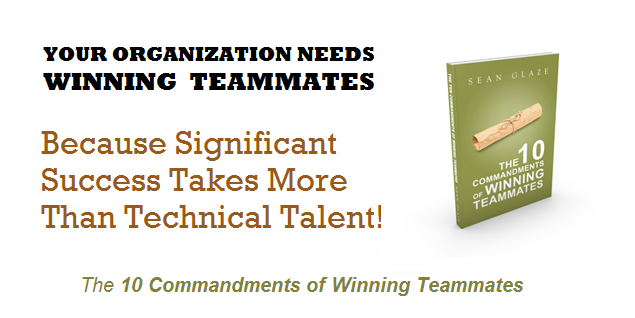 In my experience with corporate and educational groups as a speaker and team building facilitator, I have found that there are 3 levels of servant leadership.
In my experience with corporate and educational groups as a speaker and team building facilitator, I have found that there are 3 levels of servant leadership.
Working with teams in every industry, it seems that one of the greatest issues that groups face is the problem of awareness…
If someone is not AWARE of how their behaviors are affecting others, or if they are not aware of the needs and challenges of their coworkers, or if they are not aware of the strengths and backgrounds and personality styles of their teammates, it becomes easy for misunderstandings and bad communication to occur.
Awareness is the first step to improvement.
But telling is not teaching. People grow through QUESTIONS.
So in an attempt to help you identify where YOU are currently on the spectrum of service leadership, and perhaps to help you be a catalyst to assist others in their growth as well, I would like to share with you three questions to grow teammates who effectively serve others.
Each question corresponds to the level of servant leadership they are at…
1 Oblivious…
People operating at the OBLIVIOUS level are blissfully ignorant of what others are dealing with or need to get done.
An example of this is found no further than our own kitchen.
My wife and I have three kids – each of them intelligent and thoughtful… but like many other children, when they were young they apparently believed in the dirty dish fairy. Maybe your kids believed in something similar…
You know – that imaginary pixie who comes in the middle of the night to remove dirty dishes from the sink and put away the clean dishes from the dishwasher?
As they got older (and assumed chores) they learned that the “dirty dish fairy” did not exist – it was myself and my wife who did what needed to be done, while they were busy with Barbie’s and Wii games.
And some employees are like that. They focus on their interests rather than looking around them and seeing what others have to do without their help.
People at level one ask the question – “What do I want to do?”
2 Seeing…
People operating at the SEEING level of servant leadership and awareness are somewhat aware of the needs and challenges of others, and are interested enough to acknowledge but not committed enough to take action.
Our daughters played in dozens of volleyball tournaments – most indoor, and then a number of them outdoor after our youngest took up beach volleyball. One tournament in particular, when I was unable to attend, my wife was packing up everything to leave, ad must have had her hands full. One of the other parents, saw her packing up the cooler, her bag, a backpack of supplies, and then reaching to grab and fold the beach chair she had been sitting in.
He said, “I can carry that chair if you like… you have your hands full.”
But he never got up to help. He stayed in his chair and watched her carry all of it across the sand and down the walkway to her car. He saw what needed to get done, but took no action to do it. This is a step above being oblivious, but still not an effective level of servant leadership.
Some employees and leaders are like that. They see something that doing, but seldom take ownership of the opportunity.
People at level two ask the question – “What needs to get done?”
3 Initiating…
People operating at the INITIATING level of servant leadership are aware of the needs of others and take action to assist and support them.
An unfortunate example of this is seen following funerals. When my sister died years ago, I recall hearing friends of the family sharing their sincere condolences and then saying as they left, “let me know if you need anything.”
They knew there would be needs, but that question kept them at level two.
But the most thoughtful, the true servant leaders, never said those words. They saw a need and took action to address it. Instead of offering to do something, they did something. These are the people who would show up with food – and the casserole dish was more than just a meal… it was a reminder that they cared enough to help instead of just offering to do so.
The best and most valuable of your employees and leaders are like that. They see something that doing, and take the initiative to do something. They see a piece of paper on the floor and pick it up rather than pointing at it and thinking “somebody should do something about that.”
People at level three ask the question – “What can I do right now to support others?”

So, where are you on the spectrum?
The key to changing behaviors is in changing awareness…
That is one of the powerful reasons for team building events.
Improved awareness about how your behaviors impact others leads to improved behaviors – and that is what drives culture change. Culture is the repeated behaviors that are allowed and repeated…
If you are interested in improving your culture, improve the awareness of your people.
Whether that is done with fun team building events or an engaging teamwork keynote, if you want to grow your people you need to design and schedule opportunities for them to experiences that will open their eyes to the needs and challenges of others.
When all teammates are asking that level three question, your team will enjoy tremendous success and productivity…

